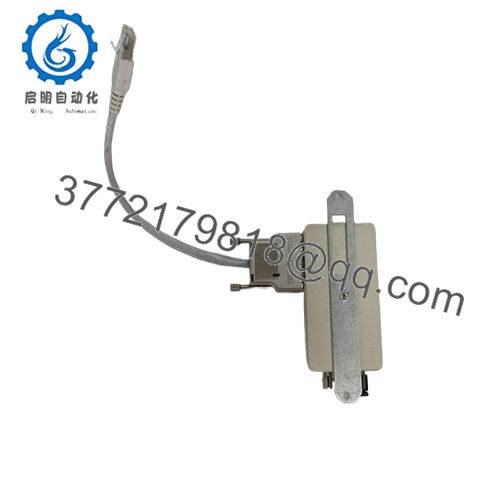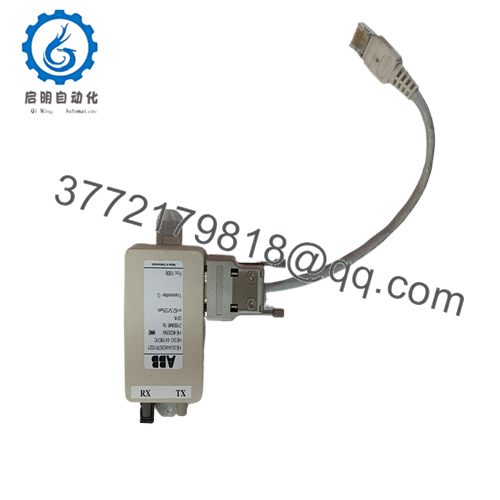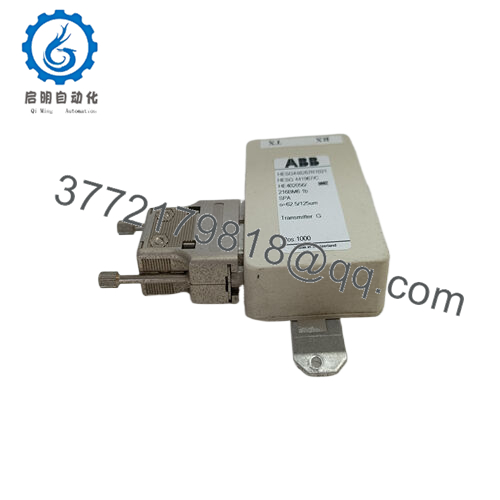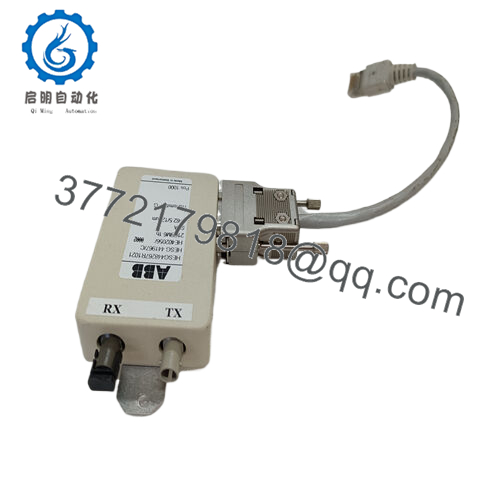Description
Real-World Use & Application Scenarios
In industrial automation, precise and reliable control modules like the ABB 216BM61B are indispensable components used extensively across multiple sectors such as power generation, chemical processing, oil and gas, and manufacturing plants. This module is engineered to meet the stringent demands of control systems that require high operational stability and fast response to complex process control challenges. Within control rooms and automation cabinets, the ABB 216BM61B is frequently employed to execute advanced process control tasks, ensuring seamless coordination between sensors, actuators, and central controllers.
Industries reliant on continuous monitoring and protection of electrical equipment benefit significantly from this module’s capabilities. Its applications range from regulating and protecting generators to managing critical operations in distributed control systems (DCS). Industrial environments characterized by fluctuating loads, potential interference, and harsh conditions find the ABB 216BM61B well suited to maintain system integrity and reduce downtime. It supports control system integrators and engineers in implementing robust automation solutions that align with industry standards and optimize plant performance.
Used in industrial automation scenarios requiring precise digital processing of signals, this model enhances operations by reliably interfacing with various sensor inputs and delivering accurate control actions. Its role is vital in scenarios where fault tolerance and rapid response times are non-negotiable, making the ABB 216BM61B a trusted choice in high-stakes environments applicable in control systems needing modularity and scalability.
- 216BM61B
- 216BM61B
Product Introduction & Positioning
The ABB 216BM61B is a sophisticated control module designed to function as a core element within ABB’s advanced process control platform. Positioned as an interface and processing unit, this module integrates seamlessly into ABB’s Distributed Control System (DCS) architectures, where it acts as a bridge between field devices and control logic algorithms. By translating raw sensor data into actionable commands, the ABB 216BM61B enables precise execution of control strategies necessary for optimizing industrial processes.
Engineers appreciate the ABB 216BM61B for its flexibility in configuring multiple I/O channels that accommodate a variety of input signals relevant to modern industrial standards. Its role is to support critical automation functions such as signal conditioning, fault monitoring, and data filtering, enhancing overall system accuracy and responsiveness. The module’s design permits it to be a modular component, easily integrated or replaced within the broader ABB automation ecosystem.
Compatibility is a key aspect of this model’s value, designed to fit within established control racks and interface conveniently with related modules, making it indispensable for systems requiring scalable and maintainable automation solutions. With ABB 216BM61B, integrators gain a reliable tool for building custom automation solutions that maintain control system integrity over long operational periods.
Key Technical Features & Functional Benefits
The ABB 216BM61B excels in delivering high-speed processing for industrial control applications, ensuring rapid evaluation of signals and timely execution of protective and control commands. Its operational stability is enhanced by advanced digital signal processing techniques, which provide robust tolerance against electrical noise and transient disturbances commonly found in industrial environments.
Physically, the module boasts a compact and rugged design, suitable for installation in standard control cabinets with limited space. The solid-state construction ensures resistance to vibration and temperature variations, extending the module’s service life and reliability in demanding production conditions. Its mounting is optimized for secure integration within ABB’s modular rack systems, simplifying both installation and maintenance.
A notable strength of the ABB 216BM61B lies in its broad compatibility with industrial communication protocols and interfaces, allowing seamless data exchange with controllers, sensors, and supervisory systems. This interoperability facilitates enhanced system diagnostics and integration flexibility, supporting both legacy and modern networked automation environments.
Long-term reliability is assured through thermal efficiency engineering and durable electronic components that minimize failure rates. This dependable performance reduces the frequency of unscheduled maintenance and system interruptions. Combined with precise calibration capabilities, the ABB 216BM61B enables engineers to fine-tune process parameters for optimal operational efficiency and safety.
Detailed Technical Specifications
| Parameter | Value |
|---|---|
| Model | 216BM61B |
| Brand | ABB |
| Product Type | Industrial Control Module |
| Power Supply | 100-240 V AC ±10% |
| Operating Temperature | -20 to +70 °C |
| Mounting | Modular Rack Mount |
| Dimensions (W x H x D) | 152 x 25 x 203 mm |
| Weight | Approx. 0.8 kg |
| Interfaces | Multiple configurable I/O channels |
| Certifications | CE, UL, IEC Standards |
| Cooling | Natural convection |
| Environmental Rating | IP20 / Industrial grade |
Related Modules or Compatible Units
216MB66 – Modular equipment rack designed to house the 216BM61B for system integration.
216BM62B – Enhanced version featuring additional communication options for complex systems.
216BM60A – Predecessor model with basic control features and limited I/O capacity.
REG216 – ABB numerical generator protection unit often paired with the 216BM61B in power applications.
BMS611B06 – Basic modular circuit protection complementing industrial control modules.
230SM – Advanced industrial control system module suited for high-performance automation lines.
P0916DY – Compatible control system module for environment-specific customizations.
Installation Notes & Maintenance Best Practices
Before installing the ABB 216BM61B, ensure the control cabinet meets the spatial requirements with adequate ventilation to maintain optimal thermal conditions. Verify proper grounding and shielding to mitigate electromagnetic interference that might compromise signal integrity. Clearance around the module should allow easy access for wiring and future servicing, while also adhering to electrical safety standards.
Maintenance routines should include regular visual inspections to detect loose connections or signs of wear, complemented by scheduled signal diagnostics to monitor functional stability. Firmware updates from ABB should be applied promptly to ensure the module operates with the latest corrections and performance enhancements. Keeping detailed logs of operating parameters and event histories aids in predictive maintenance and quick troubleshooting.





 WhatsApp: +86 16626708626
WhatsApp: +86 16626708626 Email:
Email:  Phone: +86 16626708626
Phone: +86 16626708626


